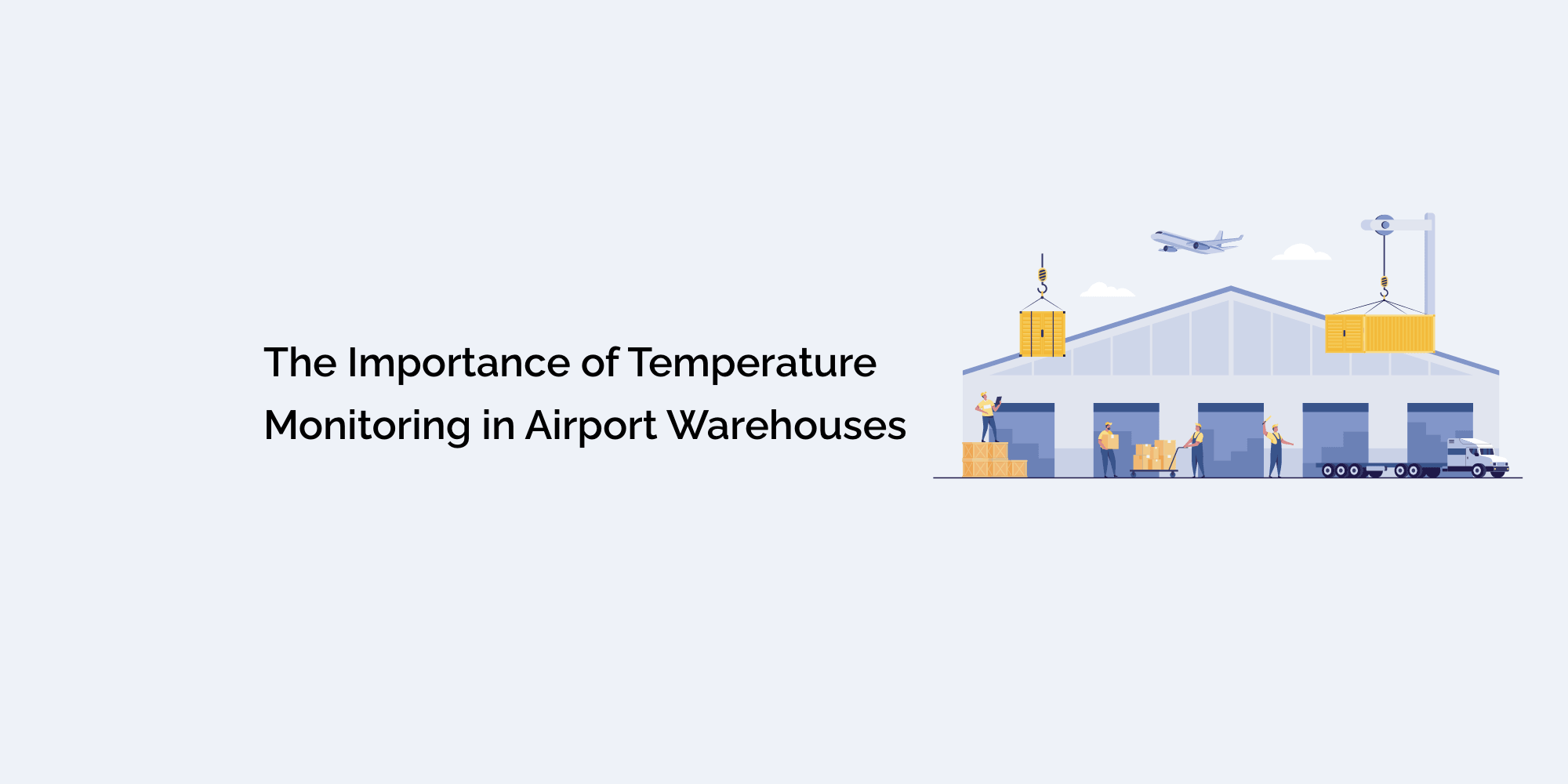Airport warehouses play a crucial role in the transportation and storage of goods, serving as essential hubs in the logistics industry. Within these warehouses, maintaining optimal temperature conditions is of utmost importance to ensure the quality and integrity of stored items, particularly perishable goods and temperature-sensitive cargo.
In this blog, we will explore the significance of temperature monitoring in airport warehouses, emphasizing the reasons why it is a critical aspect of operations.
Understanding the Impact of Temperature Fluctuations on Cargo:
Temperature fluctuations can have detrimental effects on various types of cargo. Perishable goods, such as fresh produce, dairy products, and pharmaceuticals, are particularly vulnerable to temperature deviations. Excessive heat or cold can accelerate spoilage, compromise the efficacy of medications, or lead to irreversible damage. It is crucial to understand the specific risks associated with temperature variations and the potential consequences for different types of cargo.
Compliance and Regulatory Standards for Temperature Control:
Airport warehouses must adhere to strict compliance and regulatory standards when it comes to temperature control. These standards are put in place to ensure the safe handling and storage of goods, safeguarding public health and maintaining product integrity. Warehouse operators must comply with industry-specific regulations and guidelines to mitigate risks and avoid legal repercussions.
The Cost of Inadequate Temperature Monitoring:
Inadequate temperature monitoring can result in significant financial losses for airport warehouses. Spoiled or damaged goods not only lead to inventory losses but also impact customer satisfaction and brand reputation. The cost of replacing or compensating for damaged goods can be substantial, along with the potential for legal liabilities. Additionally, there may be indirect costs such as increased insurance premiums or penalties for non-compliance with regulatory standards.
Types of Temperature Monitoring Systems:
Conventional Systems: Manual Monitoring and Data Logging:
Manual temperature monitoring involves periodic checks by warehouse staff using thermometers or handheld devices. While this method can provide some level of temperature control, it is labor-intensive and prone to human error. Data logging involves recording temperature readings at set intervals using standalone devices, providing a historical record of temperature conditions.
Remote Monitoring: Wireless Sensors and Real-Time Alerts:
Remote temperature monitoring systems offer real-time visibility into temperature conditions within airport warehouses. Wireless sensors placed strategically throughout the warehouse continuously measure and transmit temperature data to a centralized system. This allows for immediate identification of temperature deviations and the generation of real-time alerts and notifications, enabling timely intervention.
IoT-Enabled Solutions:
Advancements in Temperature Monitoring: The Internet of Things (IoT) has revolutionized temperature monitoring by connecting devices and enabling seamless data transmission and analysis. IoT-enabled temperature monitoring solutions utilize sensors, connectivity options, and cloud-based platforms to provide real-time data, advanced analytics, and remote accessibility. These advancements enhance the accuracy, scalability, and efficiency of temperature monitoring in airport warehouses.
Cloud-Based Systems:
Data Storage and Analysis:
Cloud-based temperature monitoring systems offer secure data storage, easy accessibility, and advanced analytics capabilities. Temperature data is securely stored in the cloud, ensuring reliable backup and minimizing the risk of data loss. Cloud-based platforms also enable advanced analytics, allowing warehouse operators to gain valuable insights into temperature patterns, trends, and anomalies.
Key Components of an Effective Temperature Monitoring Solution:
Temperature Sensors and Probes: Types and Placement: Choosing the right type of temperature sensors and strategically placing them within the warehouse environment is essential for accurate and reliable monitoring. There are various types of sensors available, such as thermocouples, resistance temperature detectors (RTDs), and thermistors, each with specific advantages and applications. Proper sensor placement near critical control points ensures accurate temperature readings.
Data Loggers and Data Acquisition Systems:
Data loggers and data acquisition systems are integral components of temperature monitoring solutions. Data loggers collect and store temperature data at regular intervals, providing a historical record for analysis and compliance purposes. Data acquisition systems capture and process temperature data from multiple sensors, facilitating real-time monitoring and analysis.
Connectivity Options: Wired vs. Wireless:
Connectivity options play a vital role in temperature monitoring systems. Wired connections provide reliable and continuous data transmission, making them suitable for environments with a stable network infrastructure. Wireless connectivity offers greater flexibility, allowing sensors to be placed in various locations and enabling remote monitoring.
Alerting and Notification Systems:
Timely alerts and notifications are critical in temperature monitoring to ensure prompt action when temperature deviations occur. Temperature monitoring systems can be configured to generate alerts via SMS, email, or mobile app notifications, allowing warehouse personnel to take immediate measures to mitigate risks.
Conclusion:
Temperature monitoring is a crucial aspect of operations in airport warehouses. The impact of temperature fluctuations on cargo, compliance with regulatory standards, and the cost of inadequate temperature monitoring highlight the importance of implementing robust temperature monitoring systems.
Conventional methods are being replaced by advanced solutions such as remote monitoring, IoT-enabled systems, and cloud-based platforms, offering real-time data, enhanced accuracy, and scalability. By investing in effective temperature monitoring solutions, airport warehouses can mitigate risks, ensure regulatory compliance, reduce financial losses, and maintain the quality and integrity of stored goods.








